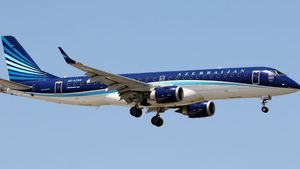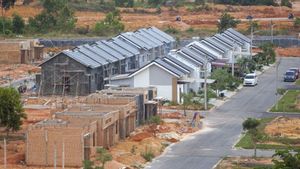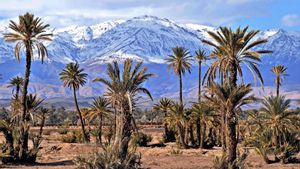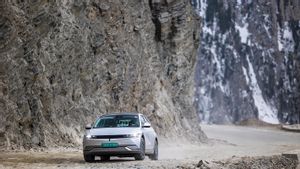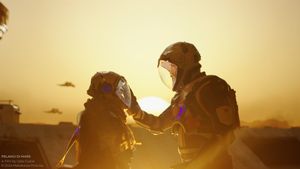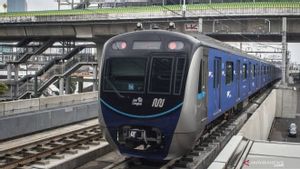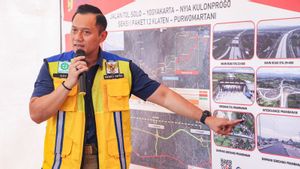JAKARTA - After failing to launch due to bad weather, finally two NASA astronauts riding SpaceX's Crew Dragon capsule on a Falcon 9 rocket landed at the International Space Station (ISS) on Sunday, May 31 yesterday.
Launching CNN International, Dragon Crew launched from the NASA Space Center in Cape Canaveral, Florida, United States (US) on Saturday at 15:22 EDT and arrived on the ISS on Sunday at 10:16 AM ET.
Two astronauts, Douglas G. Hurley and Robert L. Behnken, landed Crew Dragon and were immediately greeted by three astronauts who had settled on the space station first. They are Christopher Cassidy who is currently the commander of the space station, and Russian astronauts, Ivan Vagner and Anatoly Ivanishin.
"Welcome to the International Space Station. Please follow us," said Cassidy.
Crew Dragon capsule landed 15 minutes ahead of schedule after traveling 19 hours. You can see a camera on the space station capturing the red, green and white light from the capsule as it continues to creep up for several hours.
Docking confirmed! @AstroBehnken and @Astro_Doug officially docked to the @Space_Station at 10:16 am ET: pic.twitter.com/hCM4UvbwjR
- NASA (NASA) May 31, 2020
The astronauts take over manual control for the time being, firing thrusters to push into the best position for landing the spacecraft. Hurley and Behnken nicknamed the craft for the rebirth of US space travel, the Endeavor (after the 18th century ship commanded by British explorer James Cook). This also indicates the friendship between the two that has lasted quite a long time.
As is known, astronauts Hurley and Behnken will stay on the ISS for an undetermined time by NASA. The Crew Dragon test flight is scheduled to last several weeks allowing astronauts to test the capabilities of the capsule including as a shelter in case of an emergency.
Not only that, the two astronauts can also help with space vehicle repair tasks such as installing lithium ion batteries that have just arrived on a Japanese cargo ship. Dragon Crew can currently only last four months in space.
This short time is due to the fact that the spacecraft's solar panels will gradually decay over time. The worry is that if they stay together for too long, the panels will not be able to generate enough power to safely reenter the Earth's atmosphere.
However, over the next few weeks, astronauts will periodically warm up the Crew Dragon engine and inspect it. If the array of solar panels turns out to be more resilient than expected, the mission could be extended by more than four months.
Previously reported, this mission is the first time NASA astronauts have launched back from the US since the Space Shuttle retired in 2011. This also marks the first time a private company has flown astronauts into orbit.
For NASA, the flight was the culmination of a journey that was restarted, when the Shuttle program ended with no way for the space agency to send people into space. In the nine years since then, NASA paid Russia 90 million US dollars per seat to fly its astronauts to the space station.
If no major problems arise during this test flight, NASA will use the data from this flight to state that Crew Dragon is ready for routine flights to the space station to and from Earth.
The next Crew Dragon mission is to bring in four astronauts, three from NASA and one from the Japanese space agency. Including NASA's ambition to put people on the Moon by 2024.
"We are just the lucky ones who flew the rocket yesterday," Hurley said.
The English, Chinese, Japanese, Arabic, and French versions are automatically generated by the AI. So there may still be inaccuracies in translating, please always see Indonesian as our main language. (system supported by DigitalSiber.id)




